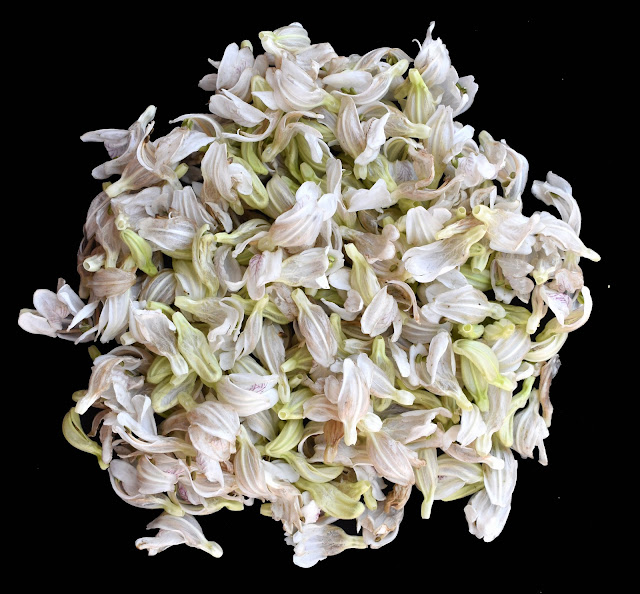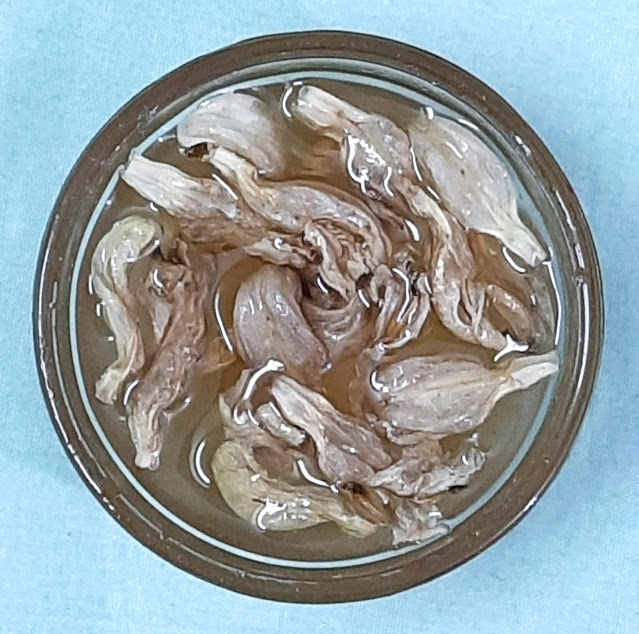Nature has bestowed mankind with many miraculous and magical herbs to take care of various health issues. One such magical plant is Vasaka or Adusa, known as Malabar nut in English. Botanically, it is known as Justicia adhatoda (Family- Acanthaceae). The generic name is derived from the name of 18th century Scottish botanist and horticulturist James Justice and the specific epithet is derived from Tamil (adatodai) and Sinhalese (adathoda) names for this plant. It is widely distributed from Afghanistan to Indo-China, growing primarily in seasonally dry tropical habitats. Vasaka plants find extensive use in Ayurveda, Siddha, Unani, and Sowa Rigpa systems of medicines practiced in India. In Himachal Pradesh, it is known as Basuti or Bansti. There is a popular pahari saying in H.P.:
Jithee Banah, Basuti, Varya जिथी बना, बसूटी, वरया,
Uthee Aadmi Bemaut Kadi Ni Marya ऊथी आदमी बेमौत कदी नी
मरया
(Meaning: Where
the chaste tree (Vitex negundo; Nirgundi), Malabar nut (Justicia
adhatoda; Adusa, Vasaka), and sweet flag (Acorus calamus; Vach)
occur, no one can die of diseases)
Morphology
Chemical Constituents
Mostly,
leaves and roots are used medicinally. However, flowers can also be used if
available. The medicinal properties are attributed to the presence of quinazoline alkaloids. Six major quinazoline alkaloids
isolated from leaves are vasicine (also known as peganine; up to 1%.), vasicoline, vasicolinone,
vasicinone, adhatodine and anisotine. Adhatodic acid is also present in considerable
quantity. Other phytoconstituents found in the leaves are anisotinine, betaine,
vasakin, vasicinine and vasicinol.
Medicinal
Uses
Vasaka
leaves and roots have been widely used for treating common health problems in India such
as cough, cold and bronchial asthma for centuries. Some of the medicinal uses
are listed below:
- For Cough: Leaf extract has an excellent
mucolytic property and is used in cough to clear the lungs. It is an integral part of Ayurvedic cough syrups. An allopathic cough syrup, bromhexine, was originally prepared from this plant (now synthetic analogue is used) and was a drug of choice in Europe. In guinea pigs, it
exhibits activity similar to codeine.Cough Syrup containing vasaka as a major constituent(Photo source: Amazon India)
- Bronchodilator: The use of leaf extract
opens the blocked bronchioles due to its strong anti-inflammatory and mucolytic activity. Vasicinone
and vasicine are responsible for this activity and are responsible for relief from asthma.
- Antitubercular Activity: The plant extract is reported to be useful in tuberculosis. Phytochemical vasicine is effective in suppressing the growth of Mycobacterium tuberculosis.
- Useful in Gastric Ulcers: Leaf powder
shows considerable gastric antiulcer activity in rats.
- Hepatoprotective: A significant hepatoprotective effect of aqueous leaf extract has been reported
in rats.
- Protection Against
Oxidative Stress: Leaf extract has a protective
effect against oxidative stress induced by free radicals and other oxidizing
agents. Vasicine is suggested to be responsible for its antioxidant activity.
- Remedy for Pyorrhoea: Massaging inflamed gums with leaf extract or powder reduces inflammation and bleeding
and cures pyorrhoea. Earlier, people used to chew its stems as country brushes to take care of oral health.
- Anti-Inflammatory
Activity: Quinazoline alkaloids vasicine, and
vasicinone exhibit potent anti-inflammatory activity.
- Haemostatic Property: Leaf extract is reported to stop bleeding from cuts and wounds.
Caution
Vasicine
has been reported to exhibit abortifacient activity. Users are advised to
consult a medical practitioner before using the plant as medicine.
Toxicity
Not reported
in the literature.
a.JPG)
.JPG)



.JPG)


